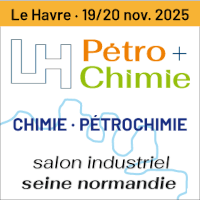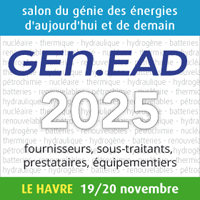déc.
18
2008 | ExxonMobil Technology Yields World’s Largest LNG Carrier
Exxon Mobil Corporation’s technology leadership in liquefied natural gas or LNG has resulted in an industry breakthrough in carrier design and size, enabling the more efficient transport of natural gas to markets throughout the world. The recent completion of the world’s first Q-Max LNG carrier, named ‘Mozah,’ marks a step change in LNG shipping by reducing transportation cost, while improving energy efficiency and reducing emissions. The innovative Q-Max ships carry up to 80 percent more cargo, yet require approximately 40 percent less energy per unit of cargo than conventional LNG carriers due to economies of scale and efficiency of the engines.
“The Q-Max carriers break the LNG shipping mold in nearly every way,” said Neil Duffin, President, ExxonMobil Development Company. “The same technology capability that drove us to develop a new class of LNG carrier is driving innovation in all aspects of the LNG value chain.”
The large LNG ship technologies, developed in conjunction with joint venture partner Qatar Petroleum, include a number of industry breakthroughs and significant enhancements, including increased ship size, onboard reliquefaction units, slow-speed diesel engines, twin propellers and rudders, largest ship-board LNG tanks ever built, the latest in hull antifouling protection and improved fire-protection systems. The end result of these new generation ships is a 20-30 percent reduction in transportation cost.
“Qatar Petroleum, with ExxonMobil, led a major technical effort to enable this groundbreaking enhancement in the LNG shipping industry,” said Mr. Faisal Al Suwaidi, Qatargas Chief Executive Officer. “Shipping is a critical link in the LNG value chain that extends from Qatar’s North Field, the largest non-associated gas field in the world with recoverable resources of more than 900 trillion cubic feet, to homes in Asia, Europe, and the Americas. With our innovative technology, we have effectively transformed the LNG business and opened up more of the world for Qatar LNG,” said Al Suwaidi. Qatar Petroleum and ExxonMobil are shareholders in a Qatar joint venture, Qatargas, that will charter the Mozah and five other Q-Max carriers to supply LNG from new liquefaction trains in Qatar.
For more than 30 years the size of LNG ships remained virtually unchanged with capacity of about 140,000 cubic meters. Qatar Petroleum and ExxonMobil’s ship operators, hydrodynamicists, naval architects and structural engineers worked closely to develop and rigorously test the larger Q-Max cargo tank designs. Comprehensive evaluation of cargo sloshing was performed to prove that the larger systems were feasible and reliable. The resulting Q-Max carriers are longer than three football fields, tower twenty stories tall from keel to masthead and are equipped with the largest membrane containment tanks ever built. With a total capacity of up to 266,000 cubic meters, each ship carries enough natural gas to meet the energy needs of 70,000 U.S. homes for one year.
In addition to increasing the size of the ship, a major initiative was undertaken to design, test and implement the on-board reliquefaction plant that re-liquefies natural gas that is vaporized during transit, re-injecting it as liquid into the cargo tanks rather than using it as vaporized gas to power the tanker itself – allowing for delivery of nearly 100 percent of the cargo. This is particularly beneficial for the long-haul voyages from Qatar to Europe and the Americas. The on-board reliquefaction facilities created an opportunity to shift from steam boilers and turbines used for propulsion by conventional LNG ships to highly efficient slow-speed diesel engines. The Q-Max ships are equipped with two diesel engines driving twin propellers and rudders. This leads to more energy efficient, reliable and maneuverable ships, reducing fuel consumption by up to one-third.
Recognized by industry veterans as a pioneer in LNG production and technology innovation, ExxonMobil’s joint ventures in Qatar will see the advent of more industry firsts over the next 18 months. In addition to pioneering the industry's largest vessels to carry LNG to market, ExxonMobil in partnership with Qatar Petroleum is employing new technology in Qatar to build four of the largest LNG production facilities in the world and is participating in the development of LNG regasification terminal projects in Italy, UK and the US.
Source : Communiqué EXXON MOBIL
Voir la fiche de l'entreprise EXXON MOBIL
| |
|
|






  
|